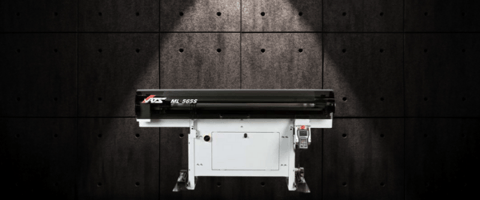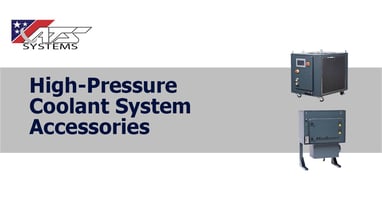Upgrading your machine shop doesn’t always require purchasing brand-new CNC machines. In fact, with...
Enhancing Efficiency in CNC Machining Through Automation
Automation has revolutionized efficiency, precision, and scalability across various industries. Machine tool accessories such as bar feeders, robotic arms, rotary tables, indexers, tombstones, and trunnions have significantly enhanced the capabilities and competitiveness of modern manufacturing. Let’s discuss the advantages of integrating automation into your CNC machining processes:
- Improved Efficiency and Productivity
Automation reduces the need for manual work, saving time on tasks such as loading, unloading, and repositioning materials or components. For example, bar feeders ensure a consistent supply of materials to the CNC machine, increasing uptime and decreasing idle time. Robotic arms can complete intricate tasks like tool changing, further streamlining your operations. Automating repetitive tasks and optimizing workflow minimizes idle time and maximizes production output resulting in higher productivity and throughput.
- Improved Precision and Consistency
Automated machine tools are programmed to perform tasks with high precision and consistency, far exceeding human capabilities reducing human error, and ensuring part quality. Rotary tables, indexers, tombstones, and trunnions enable multi-axis machining without manual repositioning, this ensures that each part is machined with identical accuracy. This consistency is crucial for industries like aerospace, automotive, and medical devices where precision is non-negotiable.
- Cost Reduction
Although initial investment in automation equipment can be substantial, the long-term cost benefits are significant. Reduced labor costs minimized scrap due to fewer errors, and optimized use of materials contribute to overall cost savings. Also, automation allows manufacturers to operate CNC machines around the clock, maximizing the return on investment (ROI) and amortizing equipment costs over a larger production volume.
- Flexibility and Versatility
Modern CNC machines equipped with automation are highly flexible and adaptable to diverse production requirements. Robotic arms can quickly switch between different tasks or tools, while rotary tables and indexers facilitate complex machining operations in a single setup. This versatility enables manufacturers to respond swiftly to changing market demands and customize production without extensive retooling. Faster setup times and continuous operation contribute to shorter lead times and improved delivery schedules.
- Enhanced Operator Safety and Satisfaction
Automation reduces the physical strain on operators by minimizing repetitive tasks and exposure to hazardous environments. Robotic arms, for example, can manage heavy or dangerous materials safely. By freeing operators from mundane tasks, automation allows them to focus on more skilled activities like programming, quality control, and process optimization boosting job satisfaction.
How Automation Machine Tools Enhance Efficiency
Automation technologies such as bar feeders, robotic arms, rotary tables, indexers, tombstones, and trunnions play a pivotal role in achieving and maximizing efficiency in manufacturing processes. How does each of these automation tools contribute to enhancing efficiency?
- Bar Feeders: Continuous Material Supply
Bar feeders automate supplying raw material (typically metal bars) to the CNC machine. This automation eliminates the need for manual loading of materials, reducing downtime associated with material handling. By continuously feeding material into the machine, bar feeders ensure uninterrupted operation, maximizing machine uptime and productivity. This efficiency is particularly beneficial in high-volume production environments where consistent material supply is critical.
- Robotic Arms: Flexible Automation
Robotic arms in CNC machining are versatile tools that perform various tasks such as loading and unloading parts, tool changing, and even complex machining operations. These arms automate repetitive and often labor-intensive tasks that would otherwise require human intervention. By integrating robotic arms, manufacturers can achieve higher throughput, consistent cycle times, and reduced setup times between jobs. This flexibility and automation enhance efficiency by optimizing workflow and minimizing idle time.
- Rotary Tables and Indexers: Multi-Axis Machining
Rotary tables and indexers enable multi-axis machining capabilities without the need for manual repositioning of workpieces. These automation devices allow CNC machines to access multiple sides of a workpiece in a single setup, thereby reducing setup times and improving machining accuracy. By automating rotational movements and positioning, rotary tables and indexers enhance machining efficiency, especially for complex parts that require precise angular positioning and machining from multiple angles.
- Tombstones and Trunnions: Workholding and Setup Reduction
Tombstones and trunnions are fixtures used for holding multiple workpieces or complex parts simultaneously on CNC machines. These fixtures streamline the setup process by allowing multiple parts to be machined in a single setup, eliminating the need for frequent repositioning and setup changes. By automating the setup and workholding process, tombstones and trunnions optimize machining efficiency, reduce downtime associated with part changeovers, and improve overall throughput.
The advantages of automation in CNC machining extend beyond just operational improvements to offering strategic advantages in a competitive market. Automation technologies such as bar feeders, robotic arms, rotary tables, indexers, tombstones, and trunnions play a critical role in shaping the future of advanced manufacturing by improving efficiency, and precision, reducing costs, and enhancing workplace safety. Embracing automation is not just about adopting new technology; it is about staying competitive in a global marketplace that demands speed, precision, and reliability.
Contact ATS Systems at sales@atssystems to learn more about maximizing efficiency and productivity in your shop.
.png)



